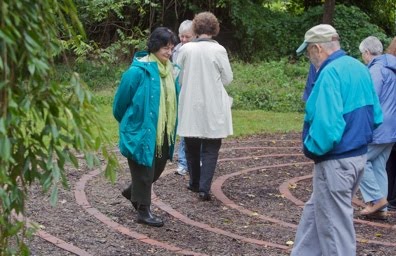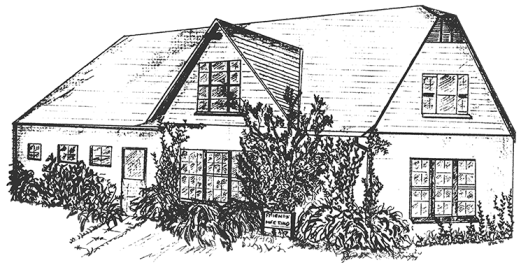Although a 19th century building houses the meeting, thanks to an early benefactor, this meeting is one of Long Island’s youngest.
Establishment of Conscience Bay Meeting in May 28, 1961
Conscience Bay Monthly Meeting of the Long Island Quarterly Meeting of the New York Yearly Meeting of the Religious Society of Friends was established on this date.
(Please see excerpts from the earliest formal minutes of the meeting, provided by current Co-clerk Joy Weaver in September, 2010, as well as press reports from this period, attached below.)
WeaverQuakersHistory1718CentSetauket
CBMM’s 50th Anniversary was celebrated on May 14, 2011.

Oral History of Conscience Bay
This 14-minute reminiscence, recorded by Gene Galantino, a founding member of the meeting, was provided by his widow, Ruth Galantino, and transformed by meeting member Wells Tipley into an .
Our Labyrinth September 2009

Our labyrinth has been at least two years in the making, from conception to completion. A member presented the idea to us as a way to work together as a community toward a pursuit which we can all enjoy in a spiritual way. He spent much time researching labyrinths and his enthusiasm led us to go forward and select a pattern. We purchased a template for the classical Baltic design from the Labyrinth Company . With a double spiral center, there is both a very short path and a long path which lead to the center. It is a 6-circuit design, well-suited to the fairly small space on our property. We decided on materials which would be maintance-free, as much as possible, so the path is laid out in mulch, with a brick border. Thanks to the dedication and hard work in the layout and construction by the clerk of our our labyrinth committee, we now have a labyrinth for contemplative walks. As Quaker worship entails sitting in silent contemplation, walking the labyrinth can be a continuation of that contemplation, in which the body is involved in a different way, as it navigates toward the center, while the spirit moves toward centering.


